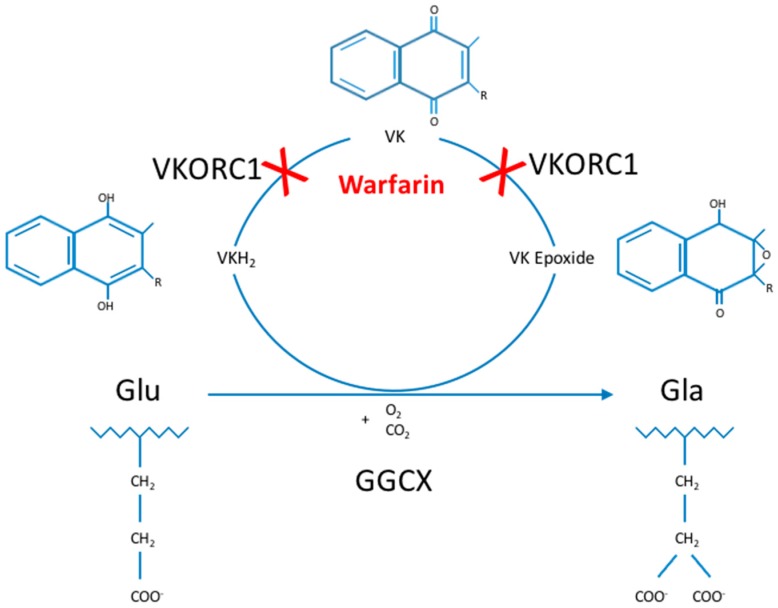Figure 1.
The Vitamin K cycle. Glu-residues are gamma-carboxylated by GGCX to Gla-residues, an enzymatic process using VKH2, O2 and CO2 as cofactors. During this process, VKH2 is oxidized to VK epoxide, which is then reduced to VK and in a second reduction step to VKH2 by VKORC1. Then, VKH2 can be reused, the reason for which this process is called the VK cycle. Gamma-carboxylation is only performed in VKDP and is essential for their activation and downstream functioning in multiple biological processes, such as blood clotting, bone formation, inflammation and cell proliferation. Warfarin inhibits the VK cycle by preventing VK reduction. C: carbon; GGCX: gamma-glutamyl carboxylase; Gla: gamma-carboxyglutamate; Glu: glutamate; H: hydrogen; O: oxygen; R: attached hydrogen or a hydrocarbon side chain of any length; VK: vitamin K (quinone); VKDP: VK-dependent proteins; VKH2: vitamin K hydroquinone; VKORC1: vitamin K epoxide reductase complex, subunit 1.

